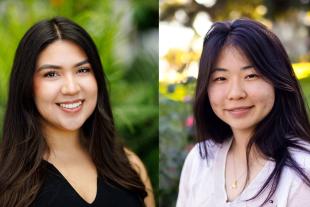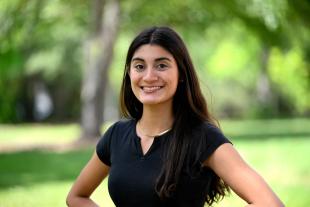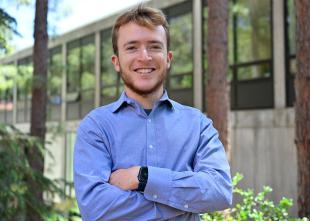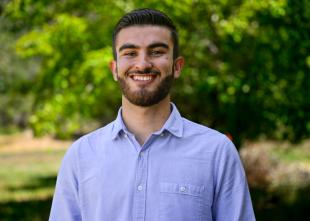Congratulations, Class of 2022! Meet Six of This Year's Outstanding Grads
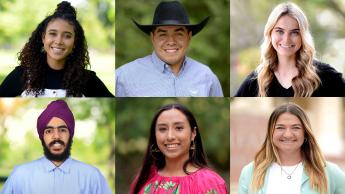
The final two years of school for Cal Poly’s Class of 2022 included course quizzes and exams along with an acquaintance named COVID that required testing of a different kind. These were interesting times and posed unique challenges for the nearly 5,500 eligible to take part in this weekend’s six commencement ceremonies, June 11-12.
The graduation candidates were attracted to the university for its Learn by Doing philosophy. They leave Cal Poly fortified by that ethos, ready to start careers or move on to advanced studies. Meet six outstanding members of the Class of 2022 — graduates prepared to bring to the world what they brought to their studies: curiosity; the ability to take on tough assignments; determination to do their best; and leadership and teamwork.
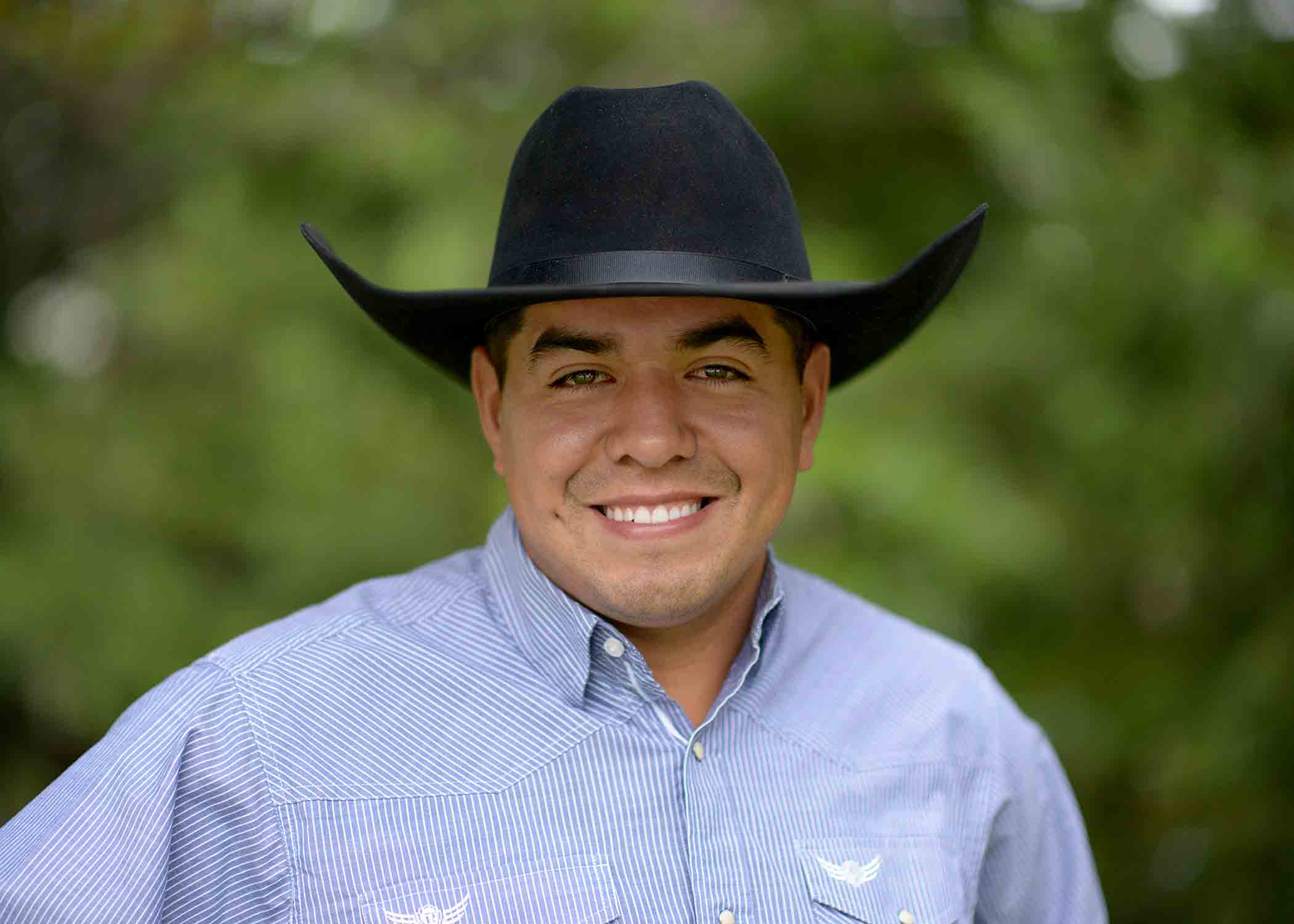 Rafael Velazquez-Ramos
Rafael Velazquez-Ramos
College of Agriculture, Food and Environmental Sciences
It’s been a long and arduous seven years of work, practice and study that has brought Rafael “Nicho” Velazquez-Ramos to this Saturday’s College of Agriculture, Food and Environmental Sciences commencement ceremony — where he will receive his master’s degree in agricultural education with focus on animal science.
After three years at a community college (earning associate degrees in animal science and agricultural business) and four at Cal Poly (including earning his bachelor’s in agricultural science in 2021 and competing on the Rodeo Team), Velazquez-Ramos said, “even with all the degrees, I feel my job is not done. I still have to keep going. I don’t want to settle.”
He’s on a quest to become a large animal veterinarian. He’s been on it since he was a boy, and he has accumulated enough upper-division course credits to apply to a four-year vet school this summer.
“I’ve been chasing the pre-veterinary track in a nontraditional route,” said the 25-year-old. “I’ve been able to take courses to count toward that through my master’s program.”
Throughout his college education, he also has had to work 25-35 hours a week on top of classes, labs, rodeo practices and other duties — sometimes seven days a week. Through it all, he has displayed a winning, can-do attitude.
“It could have been done faster if things were different,” he said. “I earned what I earned on my own back. I’ve had to pay for everything — school, my horses, car insurance, the whole nine yards.”
Horses have always been a part of his life. His father, a vaquero on the family ranch in Mexico before moving to the Bay Area, introduced his son to the animals, and he was riding by age 5.
Helping family friends with a cattle operation “gave us lots of miles of training on our horses,” he said. As he grew, he was given more responsibility for the family’s horses.
By high school, he was working part time in a veterinary clinic, a job he continued at while at college, commuting from Modesto to put in 30 hours of work, Fridays through Sundays, his first semester. After graduating high school in 2015, the Bay Point, California, resident went to Modesto Junior College, one of the Golden State’s best two-year agriculture programs, where he was inspired to attend Cal Poly. He transferred to Cal Poly in fall 2018 a little unsure of his future.
“I didn’t have the animal mindset anymore,” he said. “I had been working in crops at Modesto, and thought I was playing it safe. There are a lot of jobs in California for crops. It was not 100 percent something that I loved doing, but it was doable. It would be consistent work, secure.”
He admits to being a bit lost, “until I let myself get back involved with more animal science courses. It re-sparked that dream that I started pursuing.”
He was a walk-on for the Cal Poly Rodeo Team at the start of his second year, joining a pairs roping team. He had his best performance that year at a rodeo held just before campus shut down due to COVID in 2020, advancing to the short round of the top 10 teams.
Velazquez-Ramos competed the next year with less success following his father’s death but was selected as one of three animal science student managers of the Cal Poly Veterinary Clinic, which cares for the college’s livestock of cows, pigs, horses as well as goats, sheep and chickens.
He had the backing of his family at home. And he found support and inspiration from a Cal Poly family that included faculty and staff.
Dr. Kim A. Sprayberry was “both a professor to me and my supervisor at the vet clinic” who encouraged his quest to become a vet. Brian Larson, his boss at Cal Poly’s Animal Nutrition Center, or feed mill, showed that “being a good person and working hard no matter the circumstance pays off.” And Ben Londo — his rodeo coach, who hired him to care for the team’s practice livestock — “doesn’t care about your background or where you come from,” he said. “As long as there’s a desire to improve, he’ll support it and get behind it. He helps mold you into a better you.”
Many of Velazquez-Ramos’s favorite Cal Poly memories involve animal husbandry. He helped save the life of a cow by providing fluids and medications and treated a curious young filly bit in the nose by a rattlesnake.
And he impressed classmates during a blood draw from the jugular artery of a sheep.
“Some thought that I had done it my whole life,” he said. “I had never done anything like that before. I hit it on the first try. That was nice.”
Chloe Wardrick 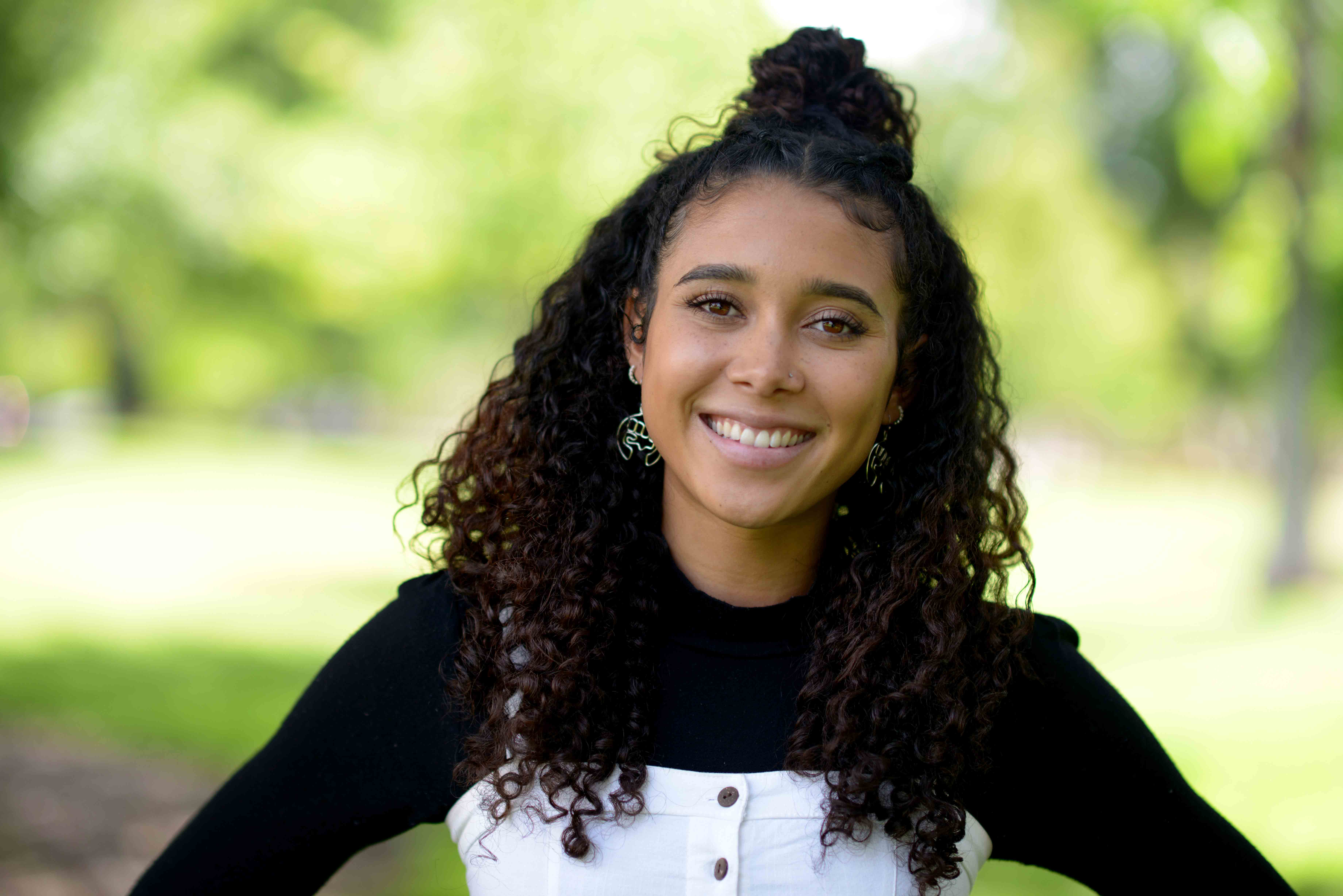
College of Architecture and Environmental Design
Like most Cal Poly architecture students, Chloe Wardrick knew she’d need a fifth year of study to compete her degree. But the 23-year-old never anticipated what a mammoth year she’d get: demanding yet fulfilling.
She served as treasurer for the Cal Poly Chapter of the National Society of Black Engineers and as president of the Black Student Union — her passion project — where she worked with other members to enhance the lives of Cal Poly’s small but active cohort of Black students and the student body through education of the Black conscience and fostering Black culture on campus. In addition, her thesis, “Constructing Belonging,” explored how architecture can create more inclusive communities.
And she was named part of an interdisciplinary research team of about 16 students to work with San Luis Obispo city staff on a feasibility study for a proposed multicultural center — “the first of its kind in the city,” she said.
Her proudest moment came in January when she became the first student to receive Cal Poly’s MLK Legacy Award. The Cross Cultural Centers created the tribute in 2019 to recognize campus community members who uphold the legacy of the Rev. Martin Luther King Jr. by leading with love and hope to create a better campus for all. Wardrick shared the 2022 honor with Professor Amber Williams.
Wardrick, of Fresno, California, capped off her fifth year earning another honor, the College of Architecture and Environmental Design’s Outstanding Senior Award for University Contribution.
“I’m grateful that all this work and all the efforts that have been put into creating a beautiful community on campus, especially for Black students, is being noticed,” she said. “I also just feel so much love from my fellow board members at the Black Student Union and the acquaintances and friends I’ve been able to meet through my roles at Cal Poly — and also the staff and faculty who have supported me throughout the years.”
Wardrick became involved after spending her first two years largely isolated and wondering if Cal Poly — in spite of her academic program being, she said, “one of the most innovative and interpersonal formats of architectural education in the West Coast.”
“I was able to deal with this confusion by finding other activities and areas of passion to help influence my dedication and interest in architecture,” she said. “This included adding minors of interest — sustainable environments and real property development — and joining co-curricular groups.”
Finding her community was the key to thriving on campus.
“I was thinking about a first-year or transfer student who might come into the BSU and what kind of experience and community we wanted to provide them,” she said. “That’s what influenced me to take on this BSU leadership role. I really wanted to connect with that person and show them all the great things the BSU is and can be.”
Wardrick says her support system helped her to succeed. She took a friend’s advice to reach out and get involved with the BSU and the National Society of Black Engineers chapter.
“Monique Ejenuko was an inspiration as she was always a friend and support system for those around her before she was a leader.”
Wardrick also relied on the board and leadership at BSU and the Black Academic Excellence Center, the on-campus support facility for Black students and student groups, who “have become my forever family,” she said.
And she singled out faculty member Mark Newell Cabrinha for his advice and counsel.
“As associate dean and a professor during my time, Mark continued to aid me in my constant evaluation of my roles as an architecture student as well as a leader on campus,” Wardrick said. “He displayed the importance of mentorship and kindness amongst campus administrators and students.”
So, what’s next for the student-turned-leader?
“Having completed the architecture program, I now have a unique outlook on how design can simultaneously impact communities and the environment in thoughtful and positive ways,” she said. She’ll begin her career as a full-time design team member at Studio Gang in San Francisco, a collective of more than 100 architects, designers and planners, with offices also in Chicago, New York and Paris.
“I will always cherish the amazing connections I have made with students and staff alike on campus,” she said. “Each and every person that I have been able to meet, collaborate and form friendships with on Cal Poly’s campus has transcended the way in which I treat, converse and support others. I will forever remember the amazing strides cultural organizations and events are making for their perspective communities at this institution.”
 Karan Singh
Karan Singh
College of Engineering
Karan Singh is unique among his classmates. At Lathrop High School, most seniors are readying for diplomas and thinking about college in the fall. Singh, 18, knows the feeling — but he finished at Lathrop three years ago.
Now, he’s excited about receiving his bachelor’s degree, magna cum laude, in electrical engineering (he concluded his studies at Cal Poly in March) and starting graduate school.
Singh is one of Cal Poly’s youngest grads ever— joining just a handful of teenagers to cross the commencement stage. Singh is now a postbaccalaureate researcher at Stanford University studying the use of ultrasound to treat Alzheimer’s disease and epilepsy, and plans to start his doctorate in electrical engineering at the Palo Alto campus next fall.
His ultimate goal, he said, is “working as an innovator in the biomedical field — likely in an entrepreneurial venture.”
When he toured Cal Poly while in high school, he found “a welcoming and professional environment” that aligned with his interests — a passion for innovation and, later, the life-altering potential of biomedical engineering. Plus, there was one important criterium: The electrical engineering curriculum “appeared very relevant to the current state of my field and was structured in a way that allowed me to go at my own pace,” he said.
His route to Cal Poly at age 15 was aided years before his September 2019 arrival by marching to that educational pace, skipping a grade in elementary school, and racing through high school in two years.
“Coming to Cal Poly significantly broadened my horizons and augmented my knowledge in many more ways than just academically,” he said. “The opportunities I’ve received here — and the ones I haven’t — have pushed me to keep moving forward towards my broader goals.
“Learn by Doing pointed me toward practical design and trying to make an impact in the present,” he added. “No amount of knowledge has worth if it isn’t used to contribute to the world. Cal Poly’s coursework gave me both the theory and practical experience I needed to excel in my ventures and produce functional tools quickly.”
Like other students, studying amid COVID was a challenge — especially for one on a two-and-a-half-year plan — but not without rewards.
“I completed more of my degree virtually than in-person,” he said. “While the alternate format promoted my early graduation and allowed me to manage my time more easily, it was a challenge adapting to the lack of significant interaction with my peers and instructors.
“I solved this problem for my cohort by creating a host of online Discord servers for coursework and general conversation,” he said of the group-chatting platform originally built for gamers that has evolved into a general-use platform for various types of communities. “They are now populated by over 1,000 collective members and most of the students in my department.”
Along the way, he had help. He cited his work with his advisor, Professor Ben Hawkins, as very rewarding.
“The friendships I’ve gained here have made my time thoroughly enjoyable,” he said. “Of course, I am also very grateful for my parents who greatly facilitated my earlier transition to college.”
With the latest stage of his education completed, he can look back at his time at Cal Poly with pride.
“Besides being one of the youngest graduates in Cal Poly’s history, I am proud of the research I am contributing to with the skills I’ve gained at Cal Poly,” he said. “My lab at Stanford works on ultrasound-based, non-invasive treatments for ailments such as epilepsy and essential tremors.
“I will most remember the long days and nights I spent at Cal Poly collaborating with my friends and classmates. Perhaps even more important than the education you gain in college are the connections and relationships you make. Though my time there was short, the impact of Cal Poly and the wonderful people I’ve had the pleasure of working with will stay with me for a lifetime.”
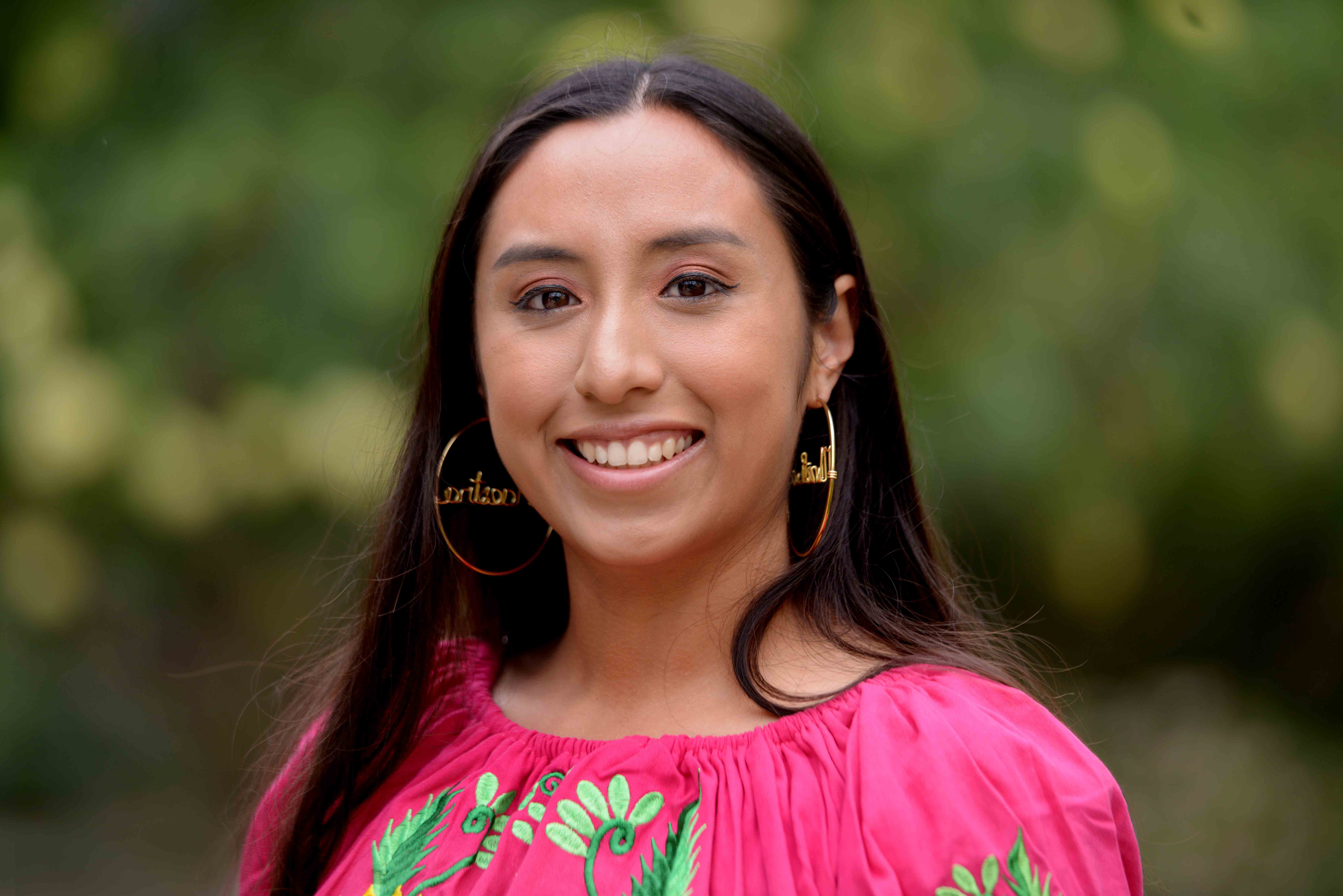 Gloria Sevilla
Gloria Sevilla
College of Science and Mathematics
Gloria Sevilla is ready to roll up her sleeves and begin teaching. The Solvang, California, resident will leave Cal Poly’s School of Education with a master’s degree in special education, an education specialist credential and bilingual authorization.
She’s also headed straight into her career, beginning a job as a bilingual education specialist at Lompoc’s Arthur Hapgood Elementary School, a dual-immersion school of about 630 mostly Latinx K-6 students.
“I am a bilingual Latina, a first-generation college student and a child of immigrants,” the 23-year-old said. “I am a person who puts my community first and wants to give back by using what I have learned to advocate for students and their families. I am a bilingual education specialist who is ready to share my experiences with future educators and be their mentor.”
A 2017 Santa Ynez Valley Union High School graduate from Santa Ynez, California, Sevilla completed her bachelor of arts in Spanish Studies at Santa Clara University in 2020. She started at Cal Poly the following year.
“I researched many schools for education specialists in California, Sevilla said, “and Cal Poly was the top-tier program. In speaking with the program directors, I knew that I would be well-prepared upon exiting this program. I also wanted to be a part of the SABE and TIER programs.”
SABE is the School of Education’s Spanish Authorization for Bilingual Educators program that provides opportunities for students to develop the knowledge, skills and abilities to become effective bilingual education teachers. TIER, Cal Poly’s Teaching for Inclusivity and Equity Residency partnership, is a multi-disciplinary, post-baccalaureate teaching program, with a focus on reducing special education and bilingual education teacher shortages.
“One of my biggest accomplishments was being admitted into the TIER program as the only bilingual education specialist and building a community with other residents while learning about best practices for emerging bilingual students and students with disabilities,” she said.
The School of Education embodies Cal Poly’s Learn by Doing approach to instruction. Housed within the College of Science and Mathematics, it closely links education, math and science faculty with school educators in three key areas: curriculum, instruction and supervision; applied scholarship; and service to teachers, schools and the teaching profession.
For candidates like Sevilla, Learn by Doing meant student teaching in a school classroom — on her own, in front of a class of elementary students with disabilities.
“We would take what we learned from our mentor teacher, peers, professor and students and apply it back in the classroom where we taught,” she said. “There is only so far that theory can get you as a teacher. That’s why having a full-time student teaching placement was so critical. It was a challenge balancing school, work and teaching, but I gained confidence in myself as I ready to embark on my first year of teaching.”
Sevilla said she received many opportunities to better understand how to become the kind of educator she aspires to be.
“Being a part of the SABE, Special Education and TIER programs challenged and inspired me to connect all that I had learned from them into one,” she said. “I also learned to advocate and address topics that may have been overlooked. I have met amazing friends and learned from them about new ideas.”
Her teachers — including Professors Briana Ronan, Tina Cheuk, Stephen Crutchfield and Leah Wood and lecturer Megan Best Wood — “inspired me to be curious, question and use my creativity to create new ways to advocate.”
While her yearlong graduate studies and student teaching assignments literally “Zoomed” by in a year dominated by COVID-19, she thinks back on how Cal Poly prepared her for her calling.
“I will remember how this program challenged me, and yet I saw myself flourish,” Sevilla said. “I will also remember my students, because they taught me how to be a better teacher.”
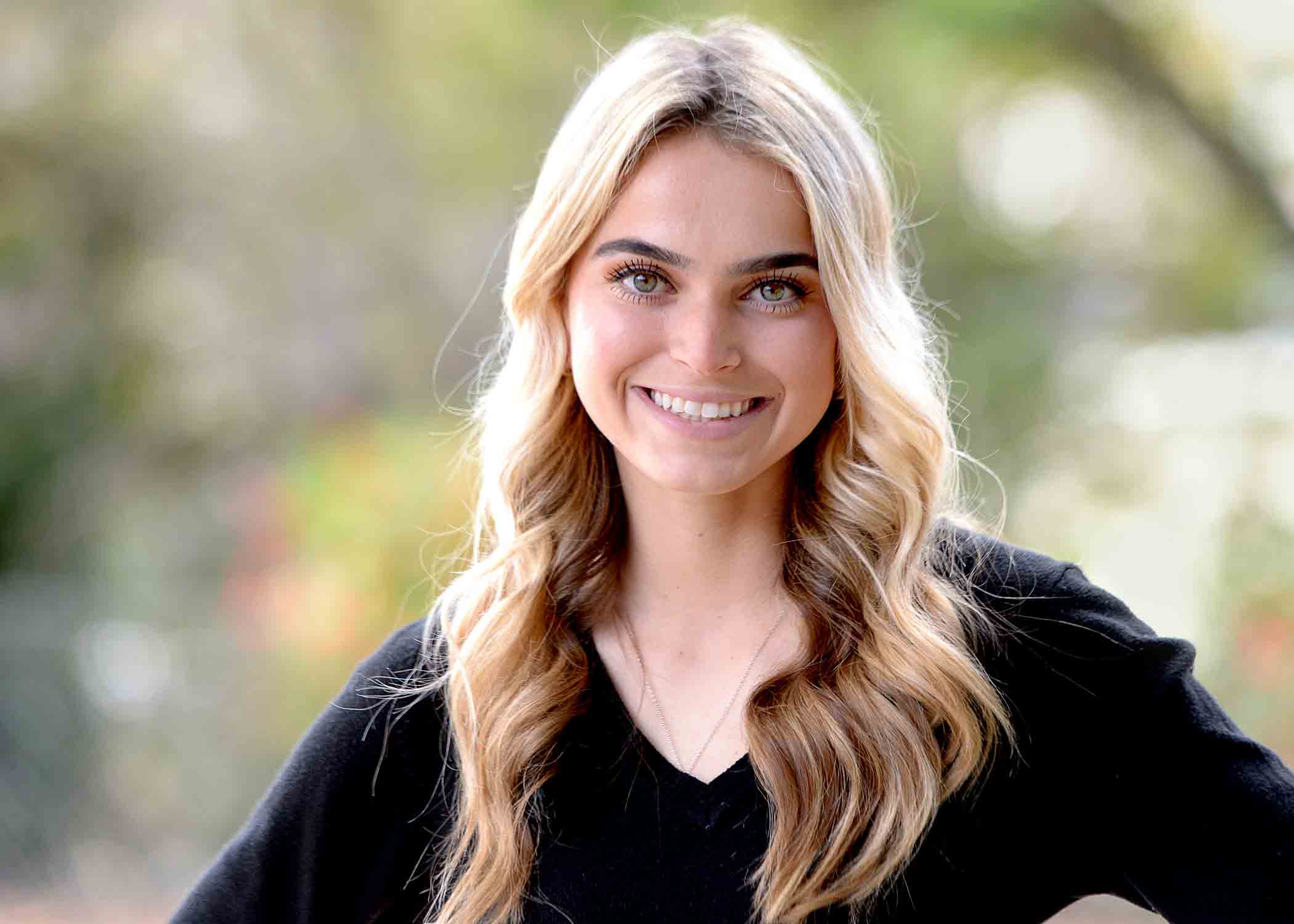 Nikki Trucco
Nikki Trucco
College of Liberal Arts
When Nikki Trucco considered a college to attend, the student-athlete knew it would need to fulfill dual priorities.
“It was tremendously important for me to find a school that was a good fit both academically and athletically,” said the women’s soccer forward.
“I found Cal Poly to be a perfect match as it offered a D1 soccer program and high level of academic prestige. I also fell in love with Cal Poly’s coaching staff and heard nothing but great things about the faculty and staff.”
And in the past three years, despite the COVID-cancellation of the 2020 season, the child development major succeeded as an athlete and a scholar — balancing soccer, school and a social life.
“I would be lying if I pretended like being a student-athlete in college has been easy for me all the time,” she said. “Collegiate academics and athletics are highly demanding, and juggling both requires a great deal of time-management. All that being said, being a student-athlete is extremely rewarding and I truly wouldn’t trade my experience for the world.”
The San Ramon, California, native finished as the Big West's third-leading scorer in 2021 with 10 goals. Both a 2021 United Soccer Coaches All-West Region second-team selection and All-Big West Conference first-team honoree, she finished third among conference players with three game-winning goals and fourth with 21 points and 47 shot attempts. The team notched a tie with UC Irvine in the conference title standings. In helping Cal Poly to a share of the 2021 Big West regular season title — the program’s first in eight years — Trucco started 20 of 21 matches and averaged a goal every 142.2 minutes.
“It was so incredible to be a part of earning such a special accomplishment,” Trucco said. “Our team worked tremendously hard during the COVID season, so it was an indescribable feeling to see all our hard work pay off.”
Her coach also described her as a leader off the pitch, and it’s in the classroom where the buoyant 21-year-old shined even brighter.
“My biggest accomplishment is being able to graduate a year early, while still achieving success in both the academic and athletic environments at Cal Poly,” she said.
Trucco earned straight As every quarter and received the College of Liberal Arts’ Outstanding Senior University Contribution Award. In addition, she was named Cal Poly’s 2022 Big West Female Scholar-Athlete of the Year for achievements in and out of the classroom. She succeeded in part because of extraordinary organizational skills and a team of supporters that included her parents (her “biggest inspiration”), twin sister Lexi on UC Davis’s soccer team, and campus mentor Professor Jennifer Jipson, chair of the Psychology and Child Development Department.
Jipson steered her to a research internship “where I was able to provide assistance on a wide variety of child development projects,” she said. “Through this I was able to connect with and impress The Goddard School, which hired me as a research consultant to continue supporting them on their projects.
“As a result of my experiences here, my passion for child development and early education have further grown, and I am more than eager to begin a career within the field. Through various internships, I have been able to develop skills that will be valuable in my future career and have been introduced to an array of opportunities that exist within the child development field.”
This fall she’ll begin work on a multiple-subject teaching credential and then start her journey as an elementary school teacher. But first, she can contrast the teen who arrived in fall 2019 and the mature young woman who will graduate Sunday, June 12.
“Coming into college, I was unsure of what to expect and how the transition would go,” she said. “I was unconfident in my ability to succeed on the field and in the classroom in the way I did in high school. Additionally, I was splitting up from my twin sister and was nervous about being alone socially for the first time.
“The freshman me would be proud of how independent and strong I am now. I have pushed myself to new limits and endured many challenges these past few years. Through this, I have learned so much about myself and about life itself. I am more sure of who I am and my abilities, and I feel empowered to take on the opportunities that lie ahead of me.”
Carolyn Lidster 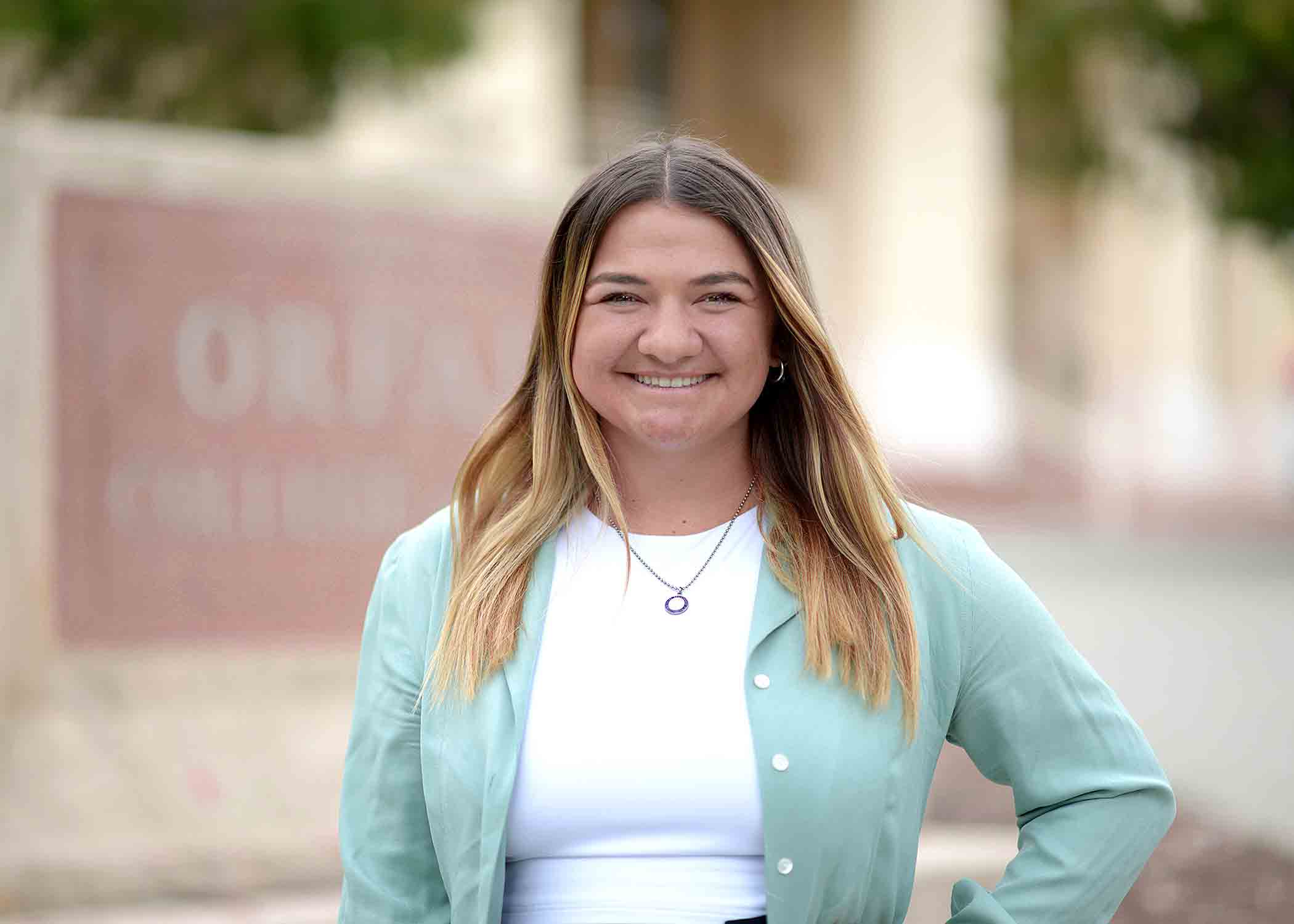
Orfalea College of Business
Carolyn Lidster was ready to leave Sacramento for college in 2018, probably outside the state — until her dad brought her to Cal Poly for a campus tour.
“I felt so incredibly connected to the environment when I toured here,” the business administration major said. “It was easy to tell that everyone is genuinely excited about their involvements, courses and peers. I did a tour of both the whole university and the Orfalea College of Business. The collaborative atmosphere did not go unnoticed. People here are eager and willing to help each other. I am someone who learns most from the people around me, and I just knew that Cal Poly would provide me with the unique opportunity to capitalize on that.
“Also, the stories, experiences and projects that Cal Poly students were working on truly fascinated me. Cal Poly students are so creative and intelligent, and I wanted to be a part of the differences they were making in the world.”
Lidster will graduate Sunday, June 12, with 131 Orfalea classmates who, like her, focused on information systems.
As a freshman she hit the ground running and four years later leaves behind a legacy of involvement, leadership, compassion, determination and student success. She graduates with magna cum laude honors and nine quarters on the Dean’s List. She has been a part of Cal Poly’s Honors Program for four years, which provides an academically enriched learning experience for the university’s most highly motivated students.
While pursuing a music minor, she was especially active in the business college, working as a peer advisor, as a research assistant in the Information Systems Department and as a teacher’s assistant for several courses — experiences that “allowed me to work on my professional and personal development,” she said.
The 22-year-old helped organize and host Orfalea’s first diversity, equity and inclusion conference and served as student representative on the Dean Search Committee’s successful hiring of business Dean Damon Fleming, efforts that led to her receiving the college’s 2022 Outstanding Senior Award for College Contribution.
She was an active member of the local chapter of Delta Sigma Pi, the professional business fraternity, serving as its vice president of community service and then as chapter president during a difficult two-year period.
“I’m sure that many students will say that the pandemic was the biggest challenge they faced in completing their degrees,” she said. “This is completely true for me. I became president of Delta Sigma Pi just days before in-person school was shut down in 2020. It was incredibly hard to keep people virtually connected who were also doing online school for 12 hours a day in their childhood bedrooms all across the country.
“This group kept me grounded throughout that time,” she added. “They diversified the way I look at life. They provided me with professional development, opportunities to give back in the community, and we had so much fun together the past few years on top of it all.”
Through the ebbs and flows of the past four years, she has enjoyed a network of supporters that includes friends, roommates, co-workers, bosses and teachers like Dr. Ronda Beaman, who lectures in the college.
“She saw something in me my freshman year, and has believed in me ever since,” Lidster said. “I have been her teacher’s assistant for a few years, and she has been a constant support system. I am forever grateful for her unwavering help, and the opportunities she has given me.”
After graduation she will travel in Europe for a few months and then begin work in January at LinkedIn in San Francisco as an associate in the online platform’s Business Leadership Program.
Lidster will leave Cal Poly with a completely different perspective.
“When I first came to campus, I was very unsure of what I wanted and the kind of people I wanted to surround myself with,” she said. “I am confident in my abilities now, and what I want out of both a career and the environment I want to be in.”
Want more Learn by Doing stories in your life? Sign up for our monthly newsletter, the Cal Poly News Recap!

